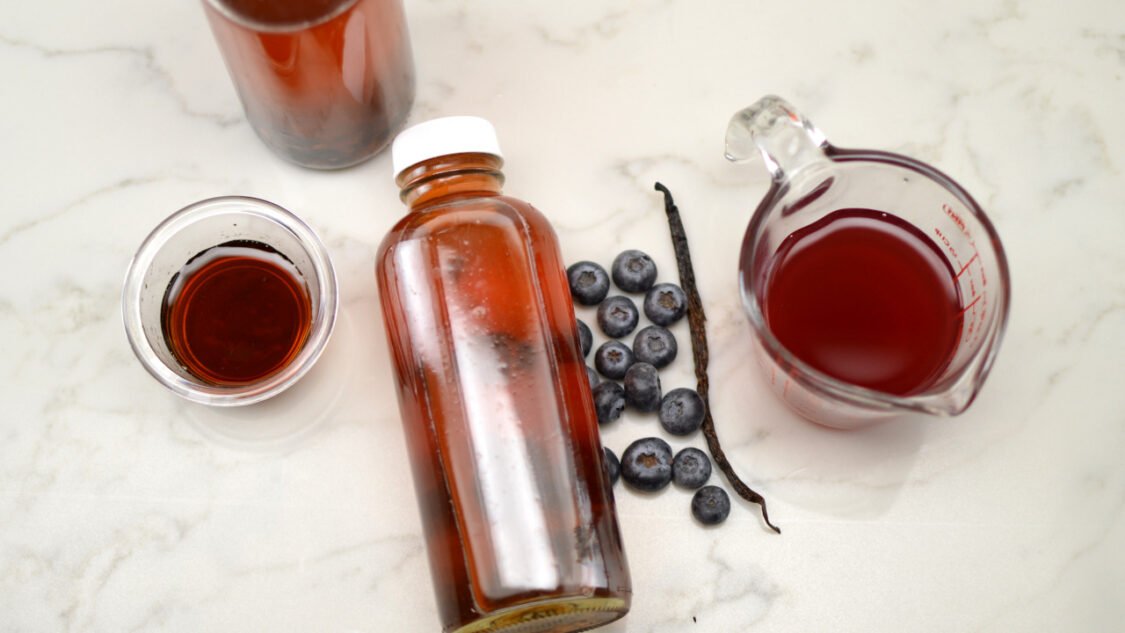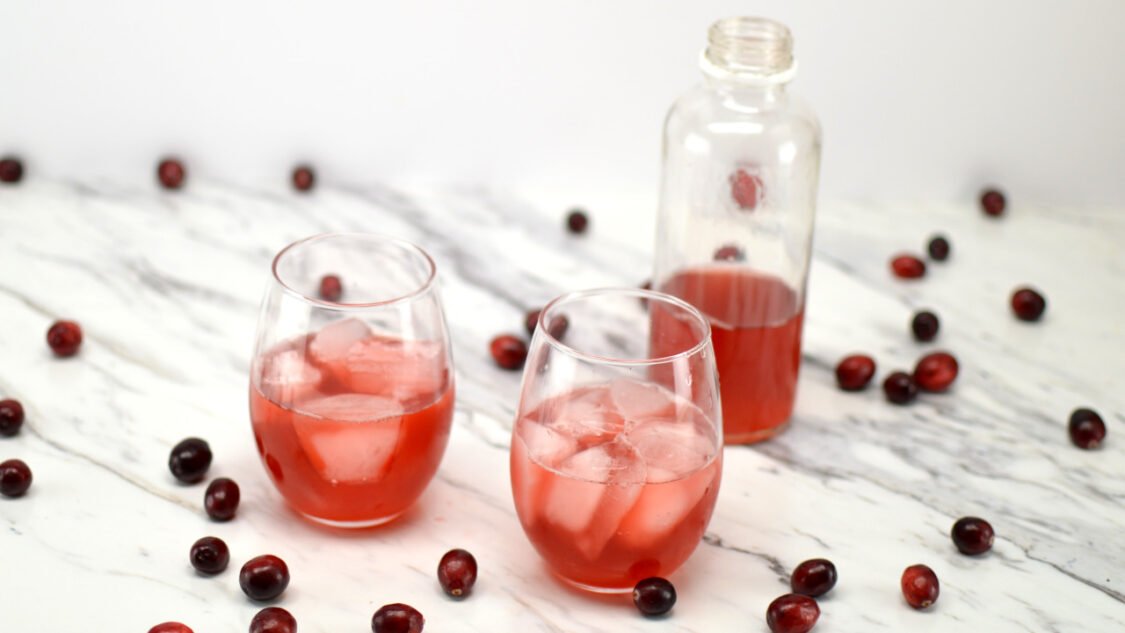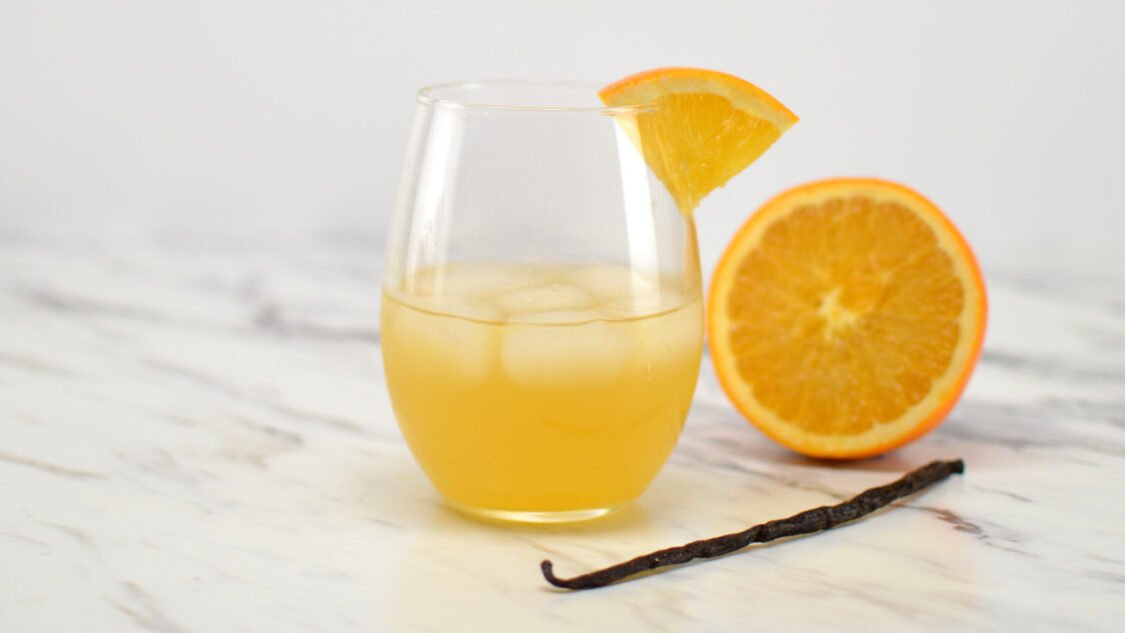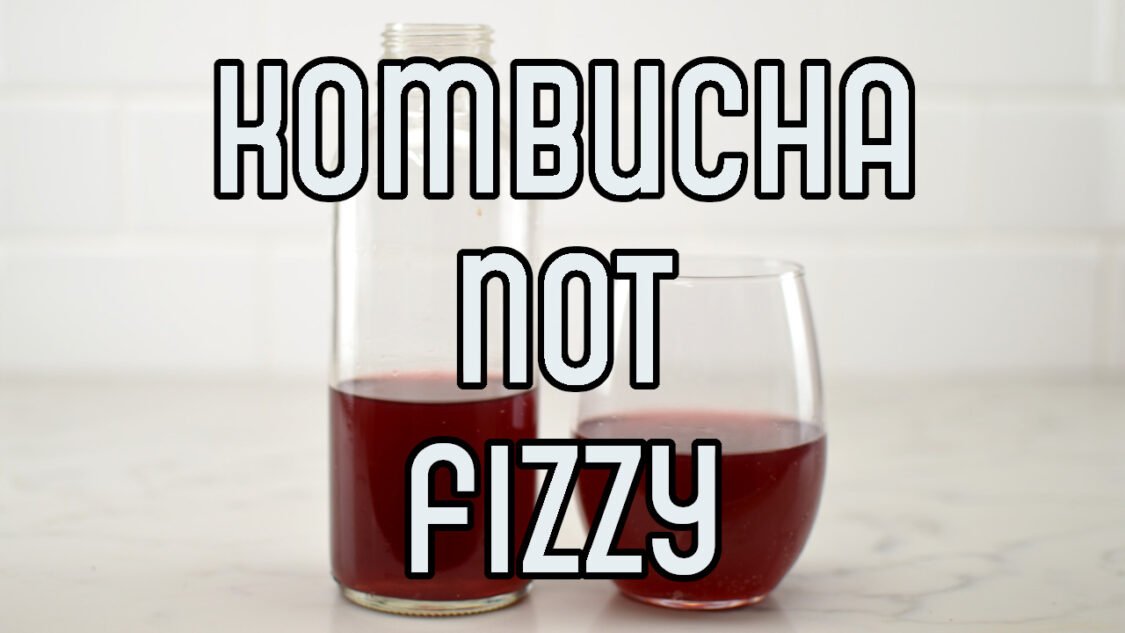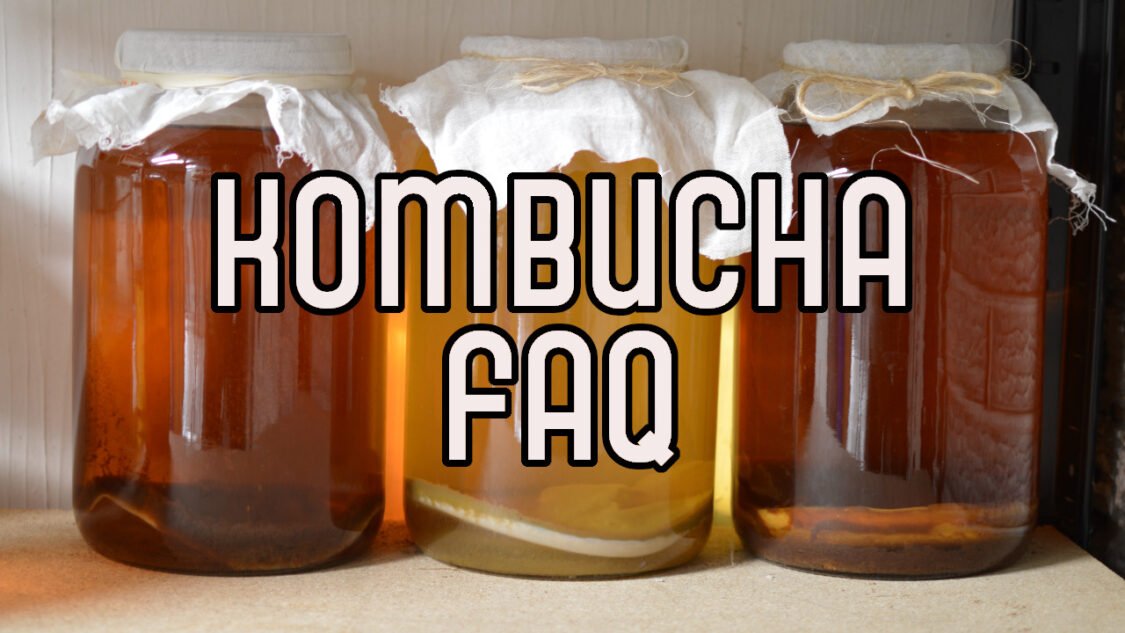Juicy Mango Kombucha

Mangos are one of my favorite fruits. With their uniform deep orange color and succulent, sweet, and aromatic qualities they evoke the feeling of being on a tropical island somewhere. They have a complex flavor profile with an incredible breadth of descriptions from zesty orange to juicy peach, tropical pineapple with notes of cucumber peel and caramel!
A ripe fresh mango has sweet, citrus, and almost melon flavors all in one. The aroma of mangos is reminiscent of tropical fruits like papaya and pineapple with floral notes. Mangos are a great addition to kombucha and their complexity complements the complex, sweet tart flavors of kombucha.
Drink juicy mango kombucha from the bottle over ice or used in a Mango Mojito Kombucha Mocktail!
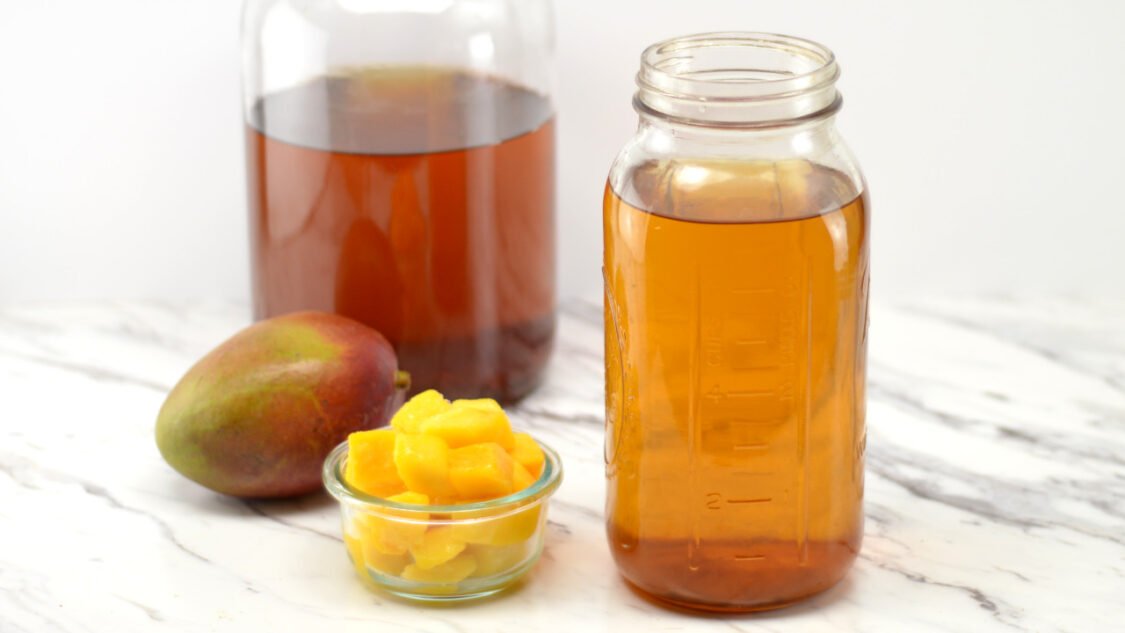
Kombucha Fermentation Overview
There are two fermentation phases when making kombucha:
1. Primary Fermentation: This is when you transform sweet tea into tart and tasty kombucha. Get all the details at how to make kombucha.
Secondary Fermentation: This is when you carbonate the kombucha by adding flavors (like mangos ?), sugars and bottling it. Check out my complete guide to flavoring your kombucha here.
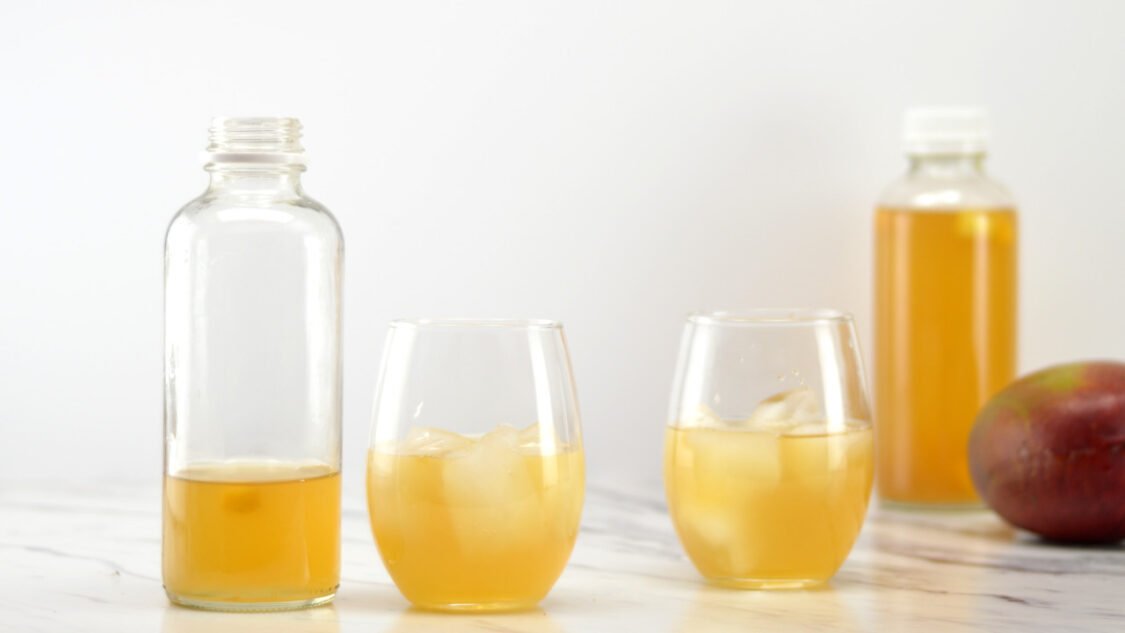
Preparing for Secondary Fermentation
This recipe makes about 7 x 16 fluid ounce bottles of finished kombucha (from a 1-gallon batch of unflavored homemade kombucha aka from your primary fermentation).
Reserve 2 cups (about 16 oz / 0.47L) kombucha and your SCOBY from your completed primary fermentation and set aside – you will use this as your starter for your next gallon batch of kombucha.
With your kombucha starter tea and SCOBY placed aside, you now have enough kombucha left to flavor and fill your bottles. This guide assumes are using 16 oz. glass bottles which are a popular choice for kombucha; however, there are many options for bottling kombucha.
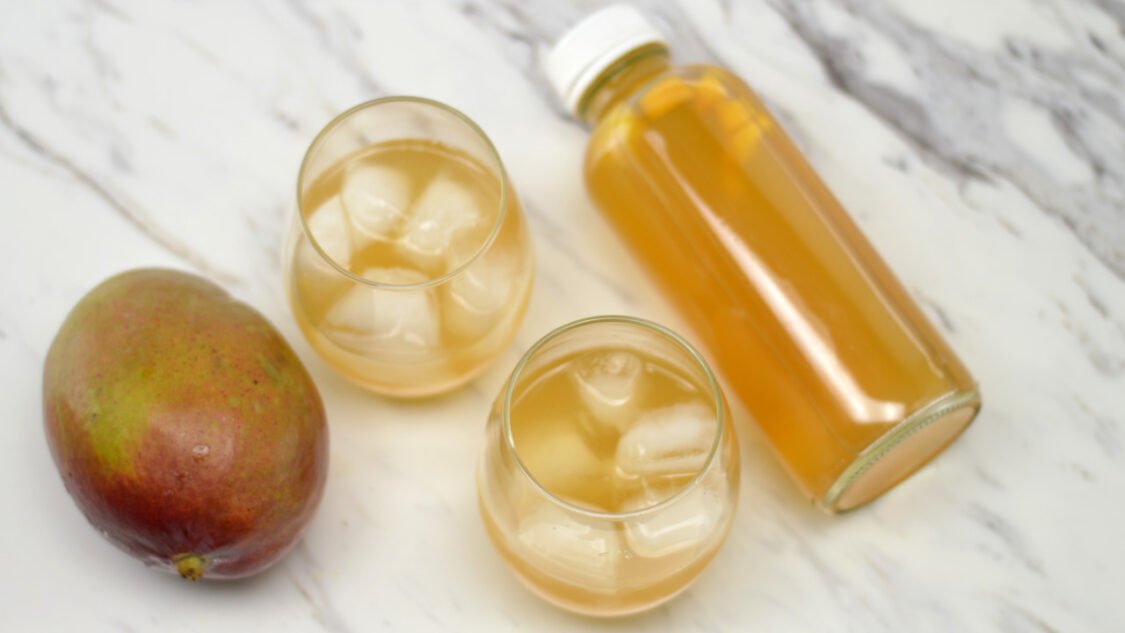
Ingredients to make Juicy Mango Kombucha
Kombucha Finished kombucha from your first fermentation is the base to which you will add the mangos goodness.
Mango: A juicy ripe mango is all you need! Fresh is best to get all of the sublime tropical goodness into your kombucha but frozen also works well.
Sugar: A touch of additional sugar for bacteria and yeast to feed on which creates carbonation (aka fizzy goodness.) When filling 16-ounce bottles I’ve found a sugar cube has the right amount of sugar (1/2 tsp) for carbonation and is a convenient way to add the right amount without the mess.
How to make Juicy Mango Kombucha
Add Flavors: Peel (if using fresh) and chop the mango and add to the bottles.
Bottle: Transfer kombucha to fermentation bottles.
Condition: For 3 to 10 days, until it reaches the carbonation level you like.
Enjoy: Chill in the fridge before serving.
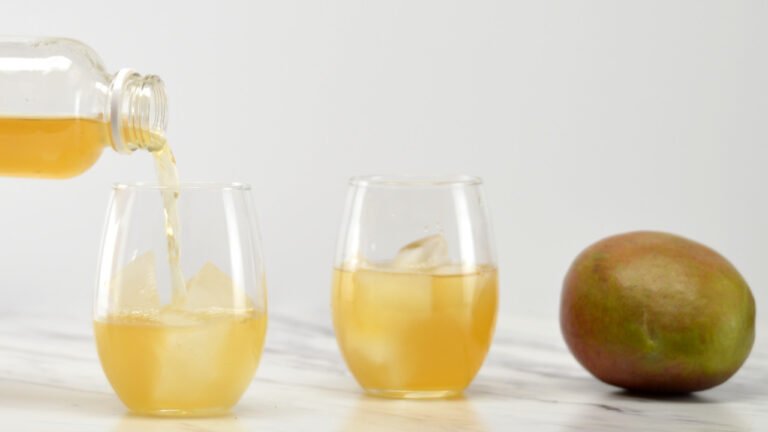
Juicy Mango Kombucha Recipe
Yield: 7 bottles • Active time: 20 minutes • Total time: 3 -10 days

This recipe assumes you are doing a secondary fermentation (flavoring and carbonation) in the bottle. You may also incorporate a third fermentation using the same proportions but following the third fermentation steps.
Ingredients:
1-gallon homemade kombucha from a first fermentation, 1.9 L
1 cup chopped mango 148 g, fresh or frozen
7 sugar cubes or 2 Tbs sugar 12 g
Instructions:
Prepare fruit: Peel and finely chop about 1 cup of fresh mango.
Flavor: Evenly divide mango among the bottles and generous pinch of cinnamon or about ¼ of a cinnamon stick to each bottle.
Sweeten: Add a sugar cube or 1 tsp sugar to each 16 ounce bottle to provide the SCOBY an additional food source to create carbonation.
Fill bottles: Transfer kombucha into fermentation bottles, leaving about 1-inch empty space at the top.
Cap: Cap the filled bottles and tighten the cap snugly.
Ferment: Place in a dark, room temperature area for 3 to 10 days, until it reaches the carbonation level you like. This process will go faster in warmer climates, and slower in cooler climates.
Enjoy: Chill in the fridge before serving. Homemade Kombucha can be stored in the fridge, tightly sealed, for several weeks. If desired, you can strain the kombucha as you serve it into glasses to remove the mango pieces.
Homemade Kombucha can be stored in the fridge, tightly sealed, for several weeks.
Tips & Tricks:
Make sweet tea for your next batch the night before you flavor and bottling and let it cool on the stove overnight so that you can flavor your kombucha and get your next batch started at the same time.
If this is your first time brewing, it may be helpful to use a plastic water bottle as a gauge. Fill a recyclable plastic bottle with kombucha (leaving 1.5 inches empty at the top). When this bottle becomes rock hard, you’ll know the glass bottles are also ready. This will help you gauge how long it take for kombucha to carbonate your climate and will prevent bottle explosions.
Nutrition Information:
Kombucha Recipes You Might Also Like
More Kombucha Knowledge
Helping you learn to brew kombucha, find inspiration for new kombucha flavors and use kombucha to make kombucha mocktails



